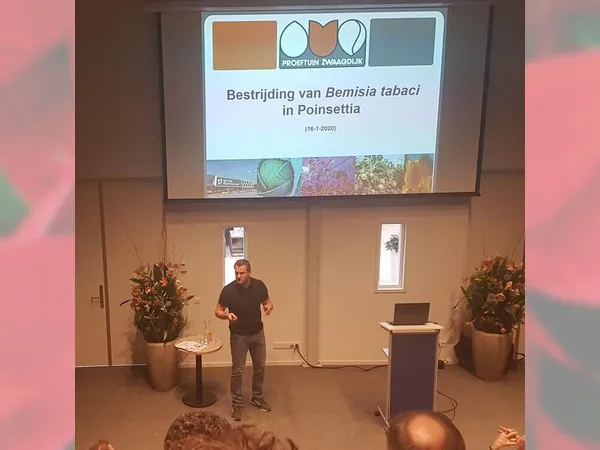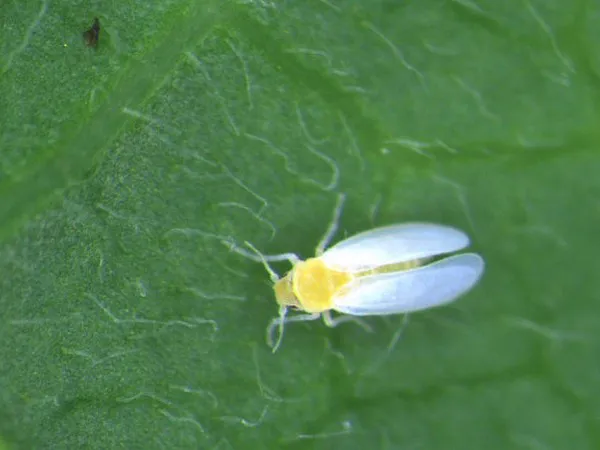Glastuinbouw Nederland and over 50 poinsettia growers concluded the 2019 poinsettia season with a crop event on 16 January. As has become traditional, they visited the lifespan test in the Royal FloraHolland lifespan testing room. The rest of the programme took place at World Horti Center, where Arthur van den Berg shared the latest news from Glastuinbouw Nederland. Jeroen Sanders, research manager at World Horti Center, was next on the programme. He shared the results of recent research into various prevention strategies for Bemisia tabaci.

Bemisia tabaci, also known as tobacco whitefly, can occur in various crops. Tomatoes, aubergines and various pot plants are particularly prone to this pest. This whitefly lives for around 30 days, and an adult whitefly can produce no fewer than 200 eggs per day within a 25 degree temperature range. This means that this insect can build up a substantial population in a greenhouse in a very short space of time. It’s a real pest for growers. They would benefit from an effective systemic approach to keep Bemisia tabaci out of their crop. Research has been carried out at World Horti Center into various strategies for combating the whitefly.
Research was carried out at World Horti Center last August and September into various strategies for combating the whitefly. Various strategies were investigated in collaboration with manufacturers of adjuvants and green crop protection products, and the population of tobacco whitefly was monitored. Because the adult whiteflies lay eggs on the underside of the leaf, the products were applied there.

Jeroen concluded that a large proportion of the strategies work well to very well if the correct spraying technology is used. Green products generally show a strong effect, whereby the adjuvants enhance the performance of the products. Starting a strategy early is important in order to achieve the best result.
Growers in the room indicated that they would be interested in a follow-up study to investigate the use of natural predators of the tobacco whitefly. This will enable them to achieve a full systemic approach.
For more information: World Horti Center
World Horti Center
Europa 1
2672 ZX Naaldwijk
Netherlands
+31 (0)174 385 600
info@worldhorticenter.nl
www.worldhorticenter.nl
